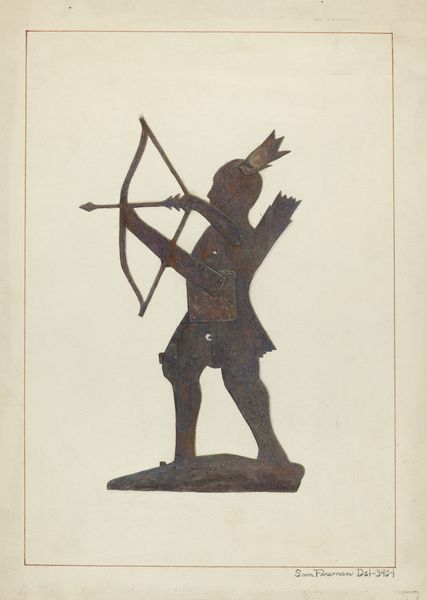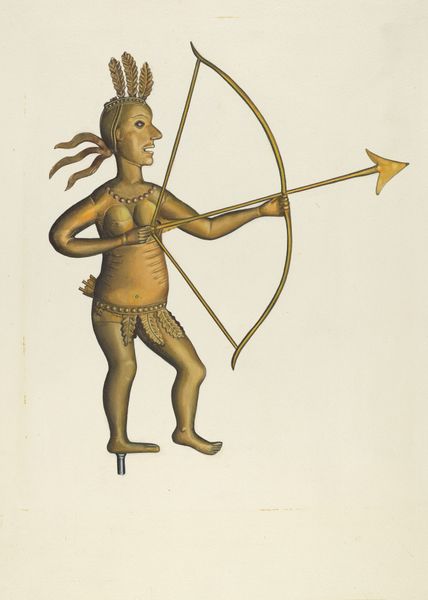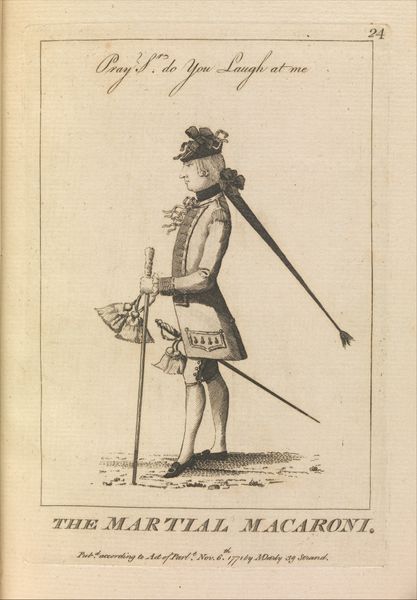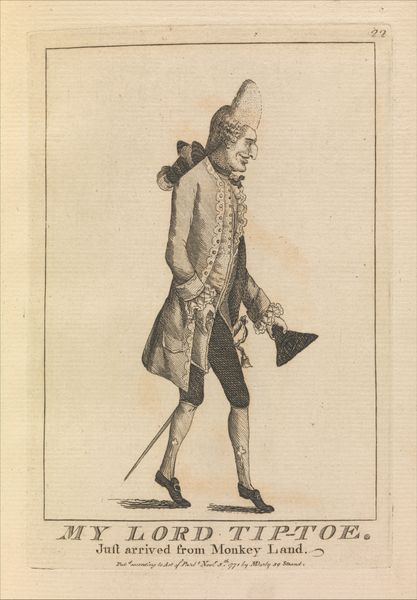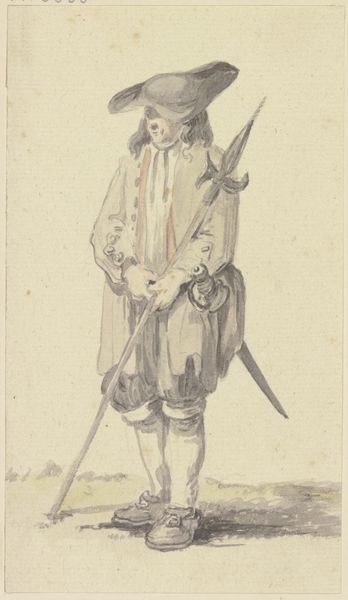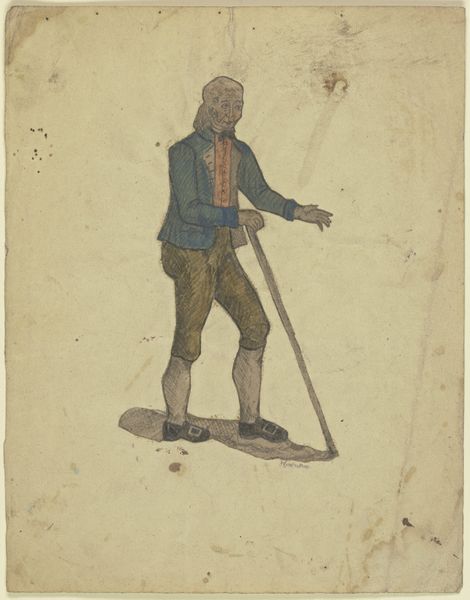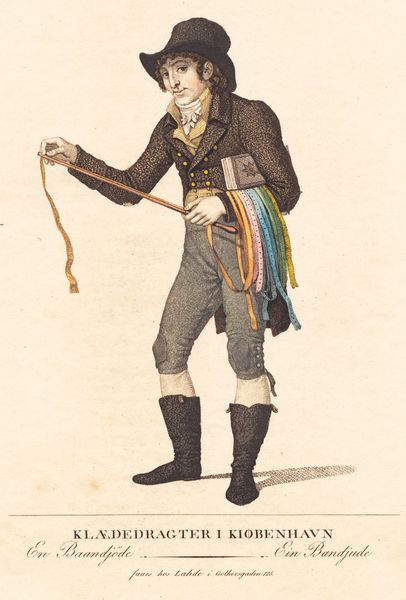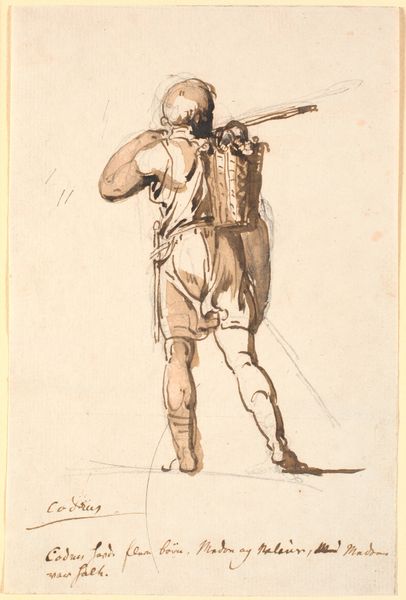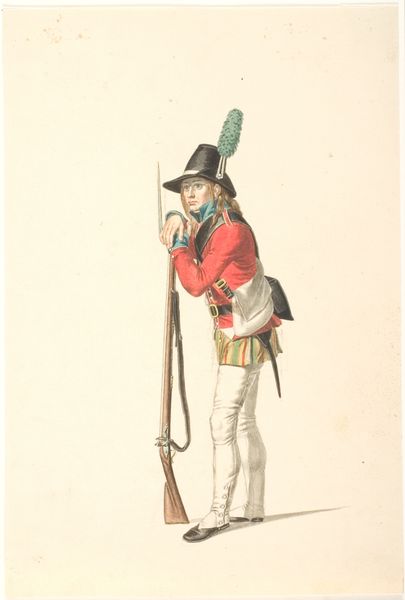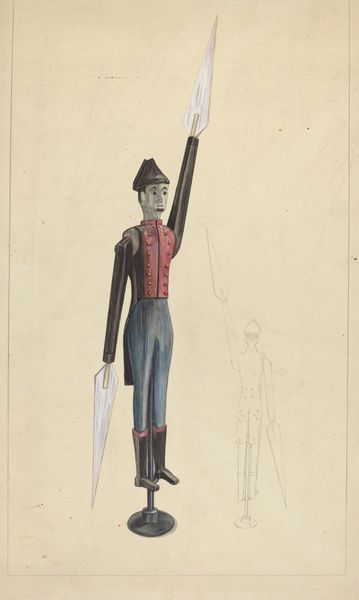
drawing, coloured-pencil
#
drawing
#
coloured-pencil
#
landscape
#
figuration
#
coloured pencil
Dimensions: overall: 40.8 x 29.2 cm (16 1/16 x 11 1/2 in.) Original IAD Object: 48" high; 30" wide
Copyright: National Gallery of Art: CC0 1.0
Curator: Ah, here we have Elmer R. Kottcamp's drawing, “Weather Vane - Count Casimir Pulaski," likely dating from around 1940. It’s a coloured pencil drawing depicting a weather vane figure of Pulaski. Editor: He strikes me as… intrepid. It’s such a simple silhouette, yet so bold. The weathered metal effect he’s captured really sings, it feels like it's stood the test of time against harsh winds and relentless weather, almost bravely. Curator: Exactly. Weather vanes themselves have a powerful symbolism. They represent direction, change, and being adaptable. Often found atop barns and important structures, they silently testify to resilience and awareness of the prevailing forces, both literally in terms of wind and figuratively. This, in conjunction with representing Pulaski is particularly resonant. Editor: Pulaski's story! A Polish nobleman and military commander who became a hero in the American Revolution… That fighting stance with his sword. It’s like Kottcamp's highlighting how a single individual can be instrumental, a guiding force amidst upheaval, just as a weather vane points to the wind’s unseen direction. I am wondering if there is a connection in Polish iconography? Curator: Well, that's a fantastic question! In terms of Polish symbols, you often find eagles representing strength and freedom. Here though, it is not that straightforward, more directly rooted in the subject represented, but rendered through folk art form… perhaps democratizing that iconic heroism, bringing it down from the symbolic heights to the barns. Editor: Hmmm... maybe this simplification, is also making Pulaski’s courage universally relatable? That the determination to stand for something and not back down is also so humanly fallible? And beautiful... Curator: Beautiful indeed! It reminds us that icons can emerge in different guises and can come in the shape of an everyman silhouette turning faithfully in the breeze. Editor: This drawing… is that everyman memorialized through a humble, beautifully rendered drawing... I can't help but feeling touched!
Comments
No comments
Be the first to comment and join the conversation on the ultimate creative platform.
